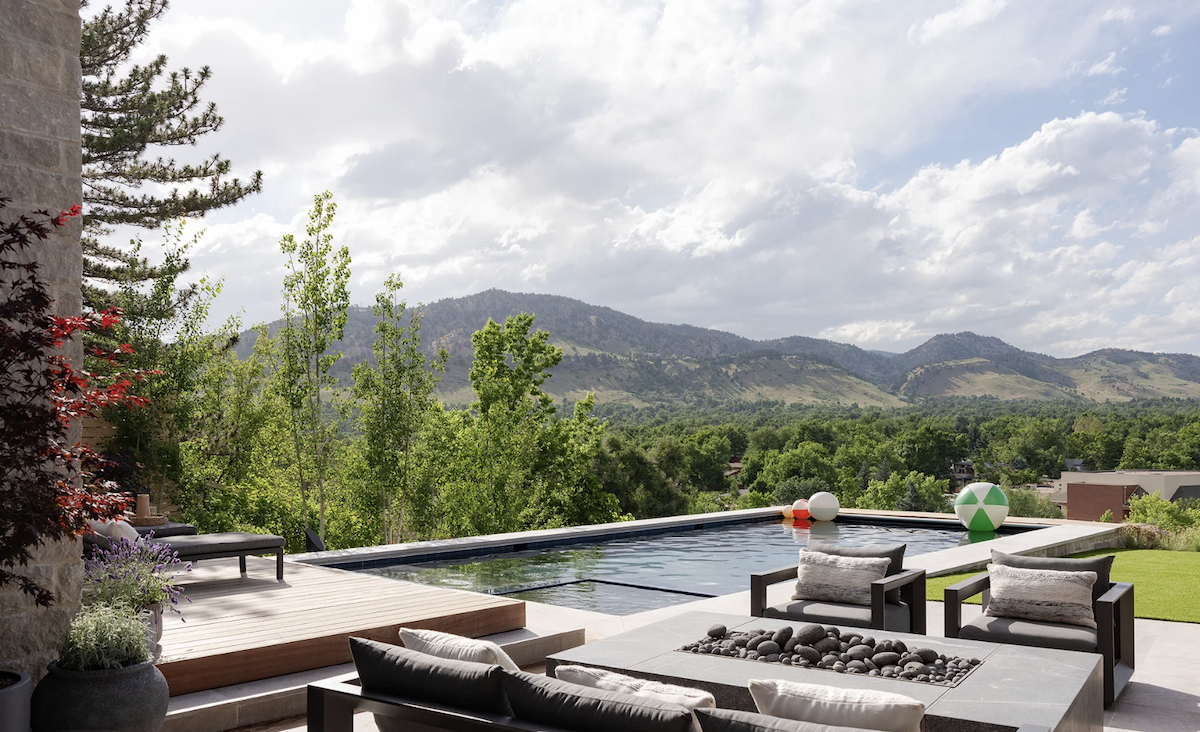

Discover cramscaping, the water-wise planting technique that creates lush, full Denver gardens using less water than traditional landscapes. Learn how densely layering compatible plants creates a self-sustaining ecosystem perfect for Colorado's semi-arid climate.





Lorem ipsum dolor sit amet, consectetur adipiscing elit. Suspendisse varius enim in eros elementum tristique. Duis cursus, mi quis viverra ornare, eros dolor interdum nulla, ut commodo diam libero vitae erat. Aenean faucibus nibh et justo cursus id rutrum lorem imperdiet. Nunc ut sem vitae risus tristique posuere.
Imagine a garden so lush and full that weeds can't find space to grow, yet it uses less water than traditional landscapes. That's the beauty of cramscaping, a planting technique that's perfect for Denver's semi-arid climate.
At Ivy Street Design, we've been incorporating cramscaping principles into Denver landscapes for over 30 years. This approach creates gardens that not only survive Colorado's challenging conditions but truly thrive with minimal maintenance.
Cramscaping means densely planting with no bare soil visible. Instead of spacing plants far apart with mulch between them, you fill every inch with carefully chosen plants that work together. By layering plants from groundcover to canopy, you build a self-sustaining ecosystem where plants shade the soil, retain moisture, and suppress weeds naturally.
The key is planting densely but thoughtfully, choosing compatible species that layer from ground to sky and support each other as they grow.
Understanding your specific conditions is critical. Track sun patterns throughout the day, noting that south-facing Denver gardens receive intense afternoon sun while north sides may stay shaded. Most Denver properties have clay soil, so test your drainage by digging a 12-inch hole, filling it with water, and timing how long it drains. More than 4 hours means you need excellent drainage plants.
Pay attention to microclimates where snow lingers, wind hits hardest, and water naturally collects. These zones require different plant choices.
Ground Layer (0-6 inches) Use low spreaders like Turkish Veronica, ice plant varieties such as Delosperma cooperi for hot spots, and creeping phlox for spring color and evergreen coverage.
Low Layer (6-18 inches) Incorporate blue grama grass for native appeal, sulfur buckwheat for long blooming periods, and prairie zinnia that self-sows to fill gaps naturally.
Mid Layer (18-36 inches) Add black-eyed Susans for reliable color, Russian sage with its airy silver foliage, and catmint varieties that bloom all season.
Tall Layer (3-6 feet) Anchor with rabbitbrush for native fall gold, Apache plume with feathery seedheads, and mountain mahogany for evergreen structure.
For true cramscaping density in Denver gardens, plan for groundcovers at 1 per square foot, small perennials at 1 per 2 square feet, medium perennials at 1 per 4 square feet, and shrubs based on mature width, overlapping by 25%.

For example, a 10x10 foot bed needs roughly 40-50 groundcover plants, 20-25 small perennials, 8-10 medium perennials, and 2-3 anchor shrubs.
Don't till Denver's clay soil. Instead, smother existing grass with cardboard and 3 inches of compost for 2 months before planting. Add only about 2 inches of compost as amendment, then create planting pockets just slightly larger than root balls.
Install structure plants first (shrubs and tall perennials), add mid-layer plants spaced closer than tags suggest, then fill with groundcovers tucked into every gap. Water deeply, soaking the entire area rather than individual plants.
Create repetition by using key plants throughout your design in odd numbers (3, 5, 7) for a natural look. Plan for succession blooming so when spring flowers fade, summer plants are ready to shine. Mix root depths, combining deep-rooted plants with shallow spreaders to use all soil layers efficiently.
Full Sun Cramscape Base with hen and chicks plus ice plant. Add middle layers of blanket flower and desert marigold. Accent with little bluestem and yucca, filling gaps with self-sowing coreopsis.
Partial Shade Cramscape Base with wild strawberry and creeping grape holly. Middle layers of coral bells and golden banner. Accent with snowberry and woods rose, allowing native columbine to self-sow throughout.
Xeric Cramscape Base with partridge feather and silver sage. Add pineleaf penstemon and prairie sage in middle layers. Anchor with curl-leaf mountain mahogany, letting blue flax self-sow for natural infill.
Water daily the first 1-2 weeks if there's no rain, then every other day for weeks 3-4. During months 2-3, water twice weekly, then adjust to weekly watering from month 4 onward based on rainfall.
The critical tip: water deeply to encourage deep roots. Shallow daily watering creates weak plants that struggle in Denver's climate.
By year three, your Denver cramscape should need watering only during extreme drought, suppress weeds naturally, attract abundant pollinators, require only seasonal maintenance, and look full and lush year-round.
Cramscaping works with nature to create resilient, beautiful gardens. At Ivy Street Design, we understand Denver's unique conditions and can help you select the right plants and design layers that thrive together.
Whether you're starting fresh or converting existing beds, our landscape architects bring 30+ years of Colorado expertise to create sustainable gardens that get better each year.
Ready to create a lush, water-wise cramscape in your Denver yard? Contact Ivy Street Design today:
Ivy Street Design
1529 North York Street, Suite 300
Denver, CO 80206
(303) 320-0362
info@ivystreetdesign.com

Contact us today to schedule a consultation and take the first step towards increasing the value of your property.